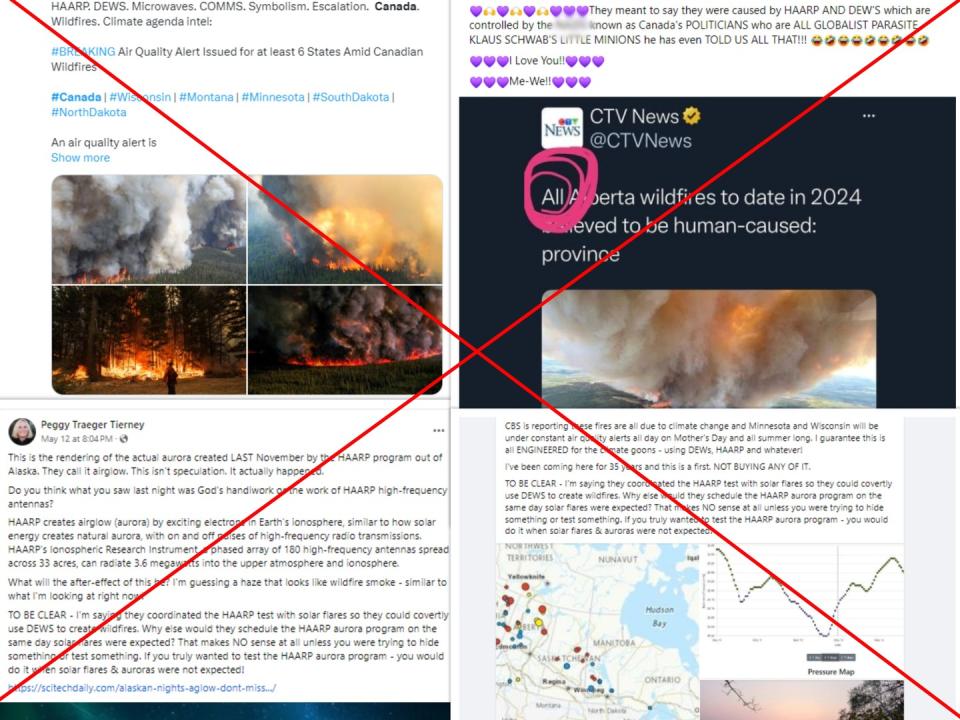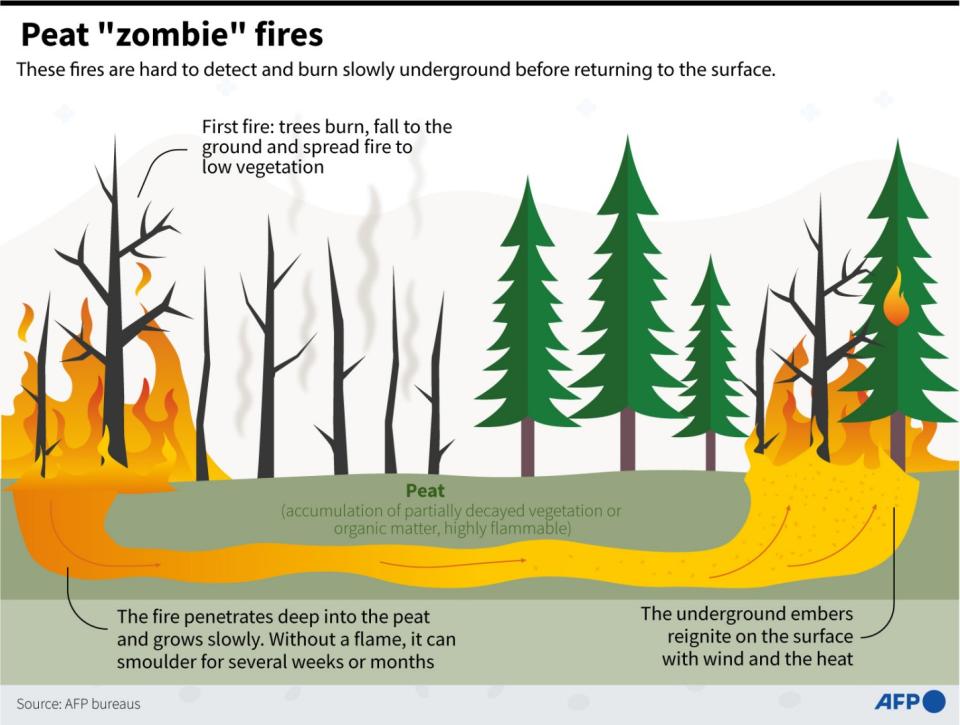Canadian wildfires ignite HAARP conspiracy theories online
As dry conditions led to an early start to the 2024 forest fire season in Canada, social media posts claimed an atmospheric project formerly operated by the US military, combined with solar explosions, sparked the flames. Experts tell AFP this is false; the effects of the research do not extend to the area of the fires and the magnitude of the blazes in the boreal forests is mostly due to climate conditions.
Several posts in April and May 2024 alluded to the use of HAARP tests coordinated with "solar flares" to create the ongoing wildfires in Canada's boreal forests, in a reference to the University of Alaska's High-frequency Active Auroral Research Program (archived here), which studies the ionized upper atmosphere.

The claims echo posts about atmospheric auroras (archived here) -- also said to have been created by HAARP -- that circulated earlier in May, and which AFP debunked.
During Canada's record-breaking 2023 wildfire season, which saw over 17 million hectares (37 million acres) burned (archived here), AFP fact-checked multiple claims that misled on the fires' origins -- often purporting the blazes had been started by pernicious actors or the government, seeking to prove the existence of climate change.
Canadian authorities have been bracing for another potentially devastating wildfire season in 2024, with the first intense blazes striking earlier than usual and currently ravaging the country's west.
While rain and cooler weather have alleviated the situation in certain regions, an ongoing and intense drought has fed fires in northeastern British Columbia, northern Alberta, and along the Saskatchewan/Manitoba border, as of May 17.
But posts saying HAARP is responsible for the blazes are false, experts told AFP.
Any effects of HAARP research cannot extend beyond a small area -- and the site in Gakona, Alaska, operates only a few times a year, experts previously explained to AFP.
"None of the HAARP facility's features could trigger the fires," Tuija Pulkkinen (archived here), chair of climate and space sciences and engineering at the University of Michigan, told AFP on May 16.
"The [wildfires] need to be ignited by something. The radar power points upward and does not come down to cause fires. There is no way the radar could be used to build a fire," she said.
Extreme drought
Smoldering layers of dried peat -- known as zombie fires -- burned through the warm winter. Below-average snow exacerbated drought across the region, which in turn, made weather conditions in the West (archived here) particularly favorable to wildfires early in the year.

While triggers for wildfires (archived here) can be of human origin (such as an accidental fire) or natural (such as lightning), Victor Danneyrolles (archived here), a forest ecology researcher at the Centre for Forest Research in Quebec, told AFP on May 17 that it is "always the weather-climatic conditions" that allow them to propagate and lead to major fires like the ones currently observed in Canada's boreal woods (archived here).
Several of the posts also blamed Direct Energy Weapons (DEWs) -- another purported way wildfires are started. But experts have repeatedly told AFP there is no evidence military technology is to blame.
Robert Scheller (archived here), associate dean of research at the College of Natural Resources of North Carolina State University, concurred.
He told AFP on May 16, 2024: "There is zero validity to these claims. Climate is the only potential cause that operates at the scale of the Canadian boreal forests."
British Columbia Wildfire Service Information Officer Sarah Budd said that a third consecutive year of drought and other conditions attributed to climate change created a particularly flammable environment in the province's forests, which she predicted could become the norm moving forward.
"We're breaking temperature records all over the world. So, it is unusually dry, if we look back to historical records," she said on May 17.
Budd said that official causes of wildfires often take some time to determine. Most of the current fires are thought to be human caused, which she said could mean anything from cigarette butts to downed power lines.
AFP has fact-checked other claims about Canadian wildfires, including here and here.

